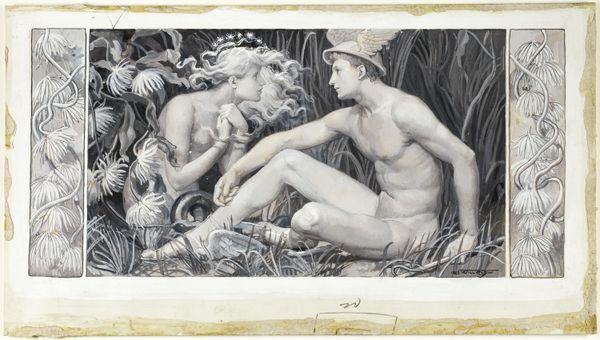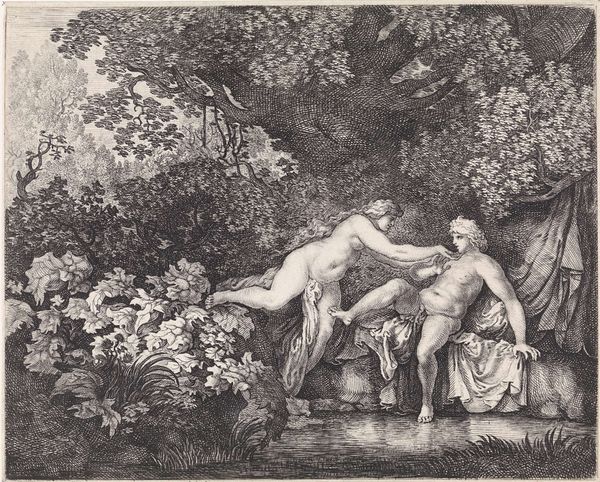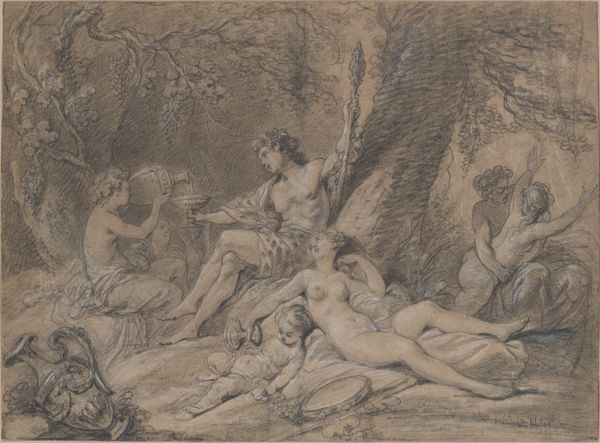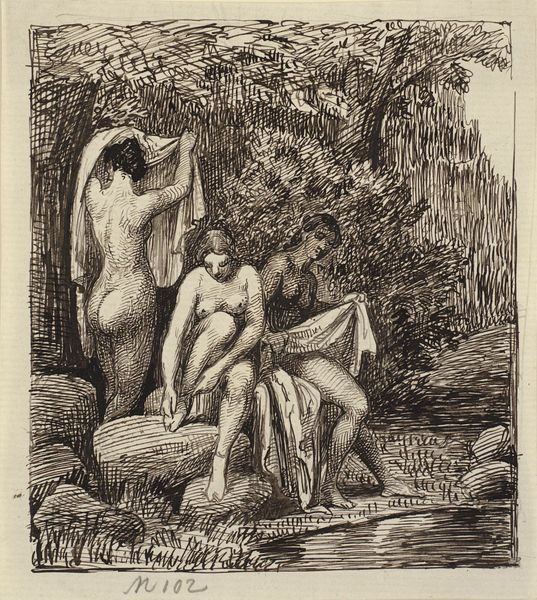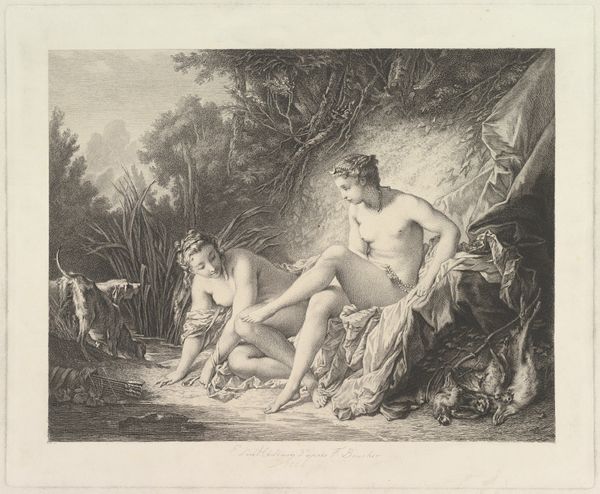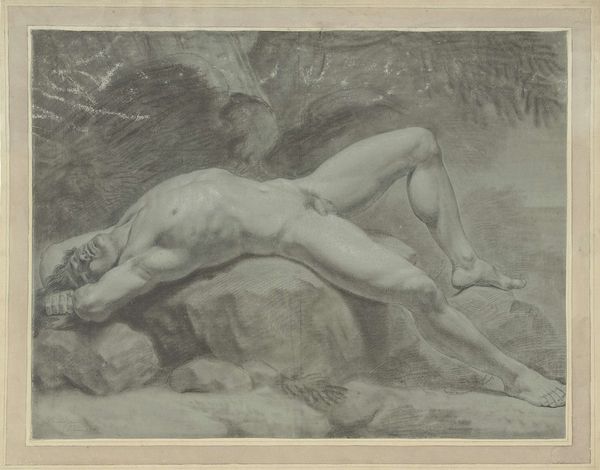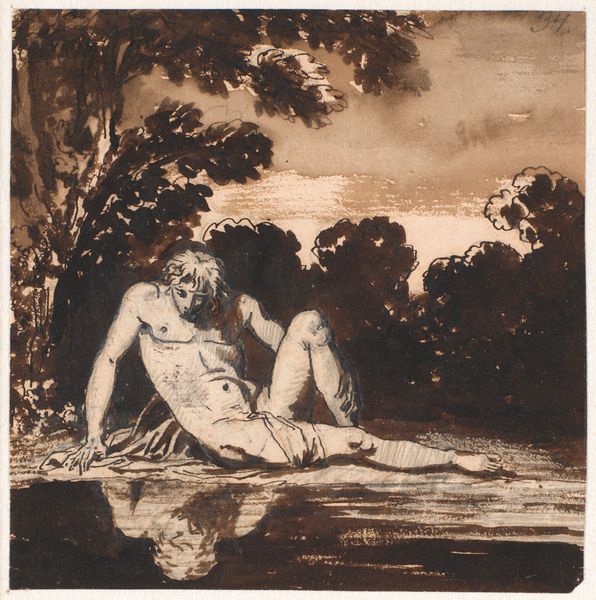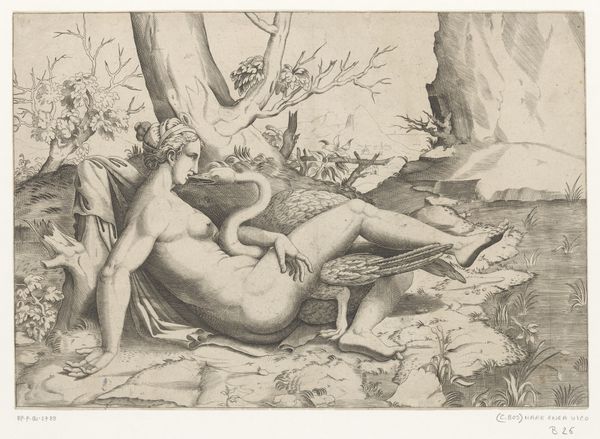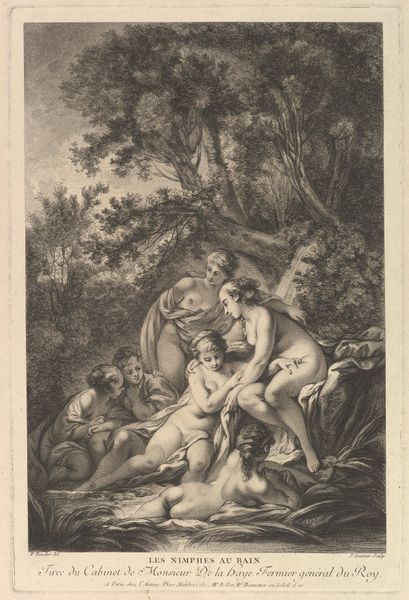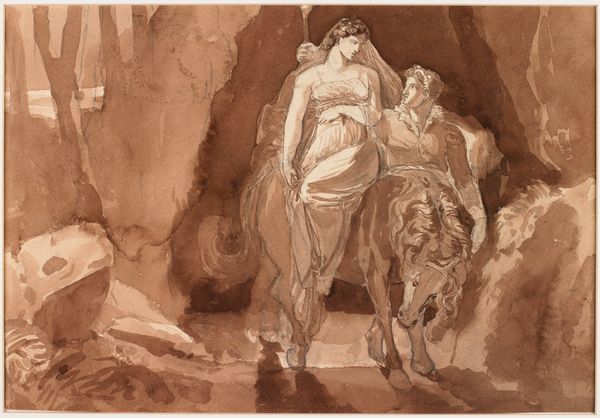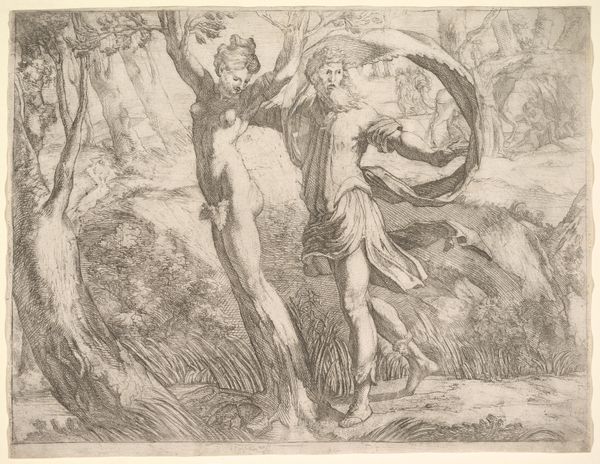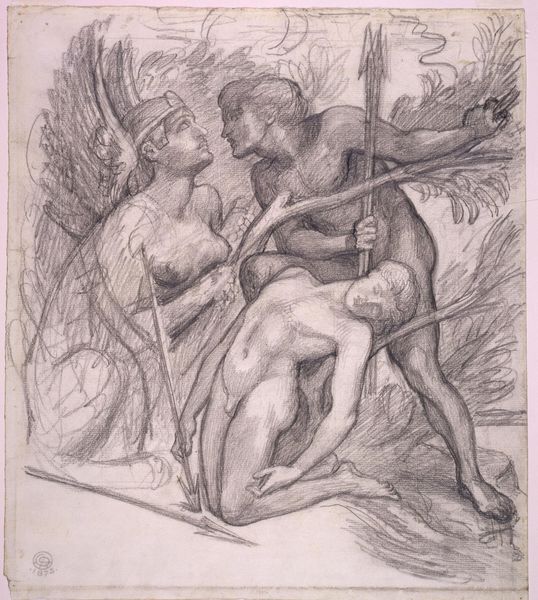
drawing, print, plein-air, paper, ink, ink-drawings, chalk, pen
#
drawing
# print
#
plein-air
#
landscape
#
charcoal drawing
#
paper
#
charcoal art
#
ink
#
ink-drawings
#
romanticism
#
chalk
#
pen
#
portrait drawing
#
genre-painting
#
history-painting
#
portrait art
Dimensions: 270 × 331 mm
Copyright: Public Domain
Curator: Alfred Edward Chalon's "Muse and Poet," currently residing here at the Art Institute of Chicago, presents an intimate scene rendered in ink, chalk, charcoal, and pen on paper. Editor: My initial reaction is one of gentle melancholy. The monochromatic palette contributes to a sense of nostalgia, or perhaps even artistic frustration. They look thoughtful, yet disengaged. Curator: Chalon, as a painter to the British Royal Family, was deeply embedded in the art institutions and portraiture of his era. These more Romantic and imaginative subjects reflect the evolving patronage of art during this time. Genre and history painting became increasingly intertwined. Editor: Note the laurel wreath upon her head, a visual cue signifying poetic or artistic triumph. Yet, it feels almost burdensome here, a symbol weighing her down as she gazes into her book. Is the figure reclining the poet or some youthful adonis serving as inspiration? I can't quite tell which role they embody here. Curator: Given Chalon's status and the prevalence of Classical imagery during his period, it’s plausible that this embodies not just artistic aspiration, but also speaks to anxieties within the established art world. The Industrial Revolution saw a decline in some artisan communities in Britain. Editor: It's a visual conversation—the open book, her gaze, his repose. Are we witnessing the spark of creation or perhaps its laborious grind? Curator: Perhaps the scene is staged, an allegorical representation rather than a snapshot of plein-air activity, despite the "plein-air" tag associated with the piece. Even studies were increasingly seen through the lens of Romantic ideals. Editor: The work's incompleteness is part of its charm. There’s a dreamlike quality that leaves space for interpretation. This piece is not delivering concrete meaning so much as hinting toward the creative state of mind, the push and pull between model and muse, work and toil. Curator: Indeed, the very ambiguity allows us to project our own ideas of artistry onto these figures. Its presence here continues that long tradition of discourse within an institutional context. Editor: Ultimately, "Muse and Poet" resonates as a testament to the enduring power of symbolism. It’s a glimpse into the complexities of inspiration.
Comments
No comments
Be the first to comment and join the conversation on the ultimate creative platform.
